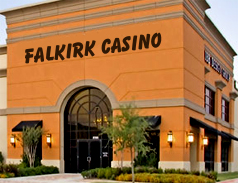This is a Roleplaying Casino. Not Real. Simple rules: Poker (Stud and Draw), Black Jack (or Twenty One): use //roll-dice1-sides13 - 1. Ace 2. Two 3. Three 4. Four 5. Five 6. Six 7. Seven 8. Eight, 9. Nine, 10. Ten, 11. Jack, 12. Queen, 13. King. Alternating the dice number as needed: Poker starts with dice5, Blackjack starts with dice2. The dea;er can roll the dice for those playing also. To become really technical (most realistic), the dice can be rolled by the Dealer in another room using AIM and show the respective players what they have as far as cards to bet on. A more complex structure for Poker is listed below so that suits can be taken in as a factor.
Five Card Stud or Draw
(//roll-dice5-sides52,
for Five Card Draw the 5 changes to what is exchanged for a hand.)
Standard Poker Hand Ranking: There are 52 cards in the pack, and the ranking of the individual cards, from high to low, is ace, king, queen, jack, 10, 9, 8, 7, 6, 5, 4, 3, 2. There is no ranking between the suits - so for example the king of hearts and the king of spades are equal. A poker hand consists of five cards. The categories of hand, from highest to lowest, are listed below. Any hand in a higher category beats any hand in a lower category (so for example any three of a kind beats any two pairs). Between hands in the same category the rank of the individual cards decides which is better, as described in more detail below. 1. Royal Flush: This is the highest poker hand. It consists of ace, king, queen, jack, ten, all in the same suit. As all suits are equal, all royal flushes are equal. 2. Straight Flush: Five cards of the same suit in sequence. Between two straight flushes, the one containing the higher top card is higher. An ace can be counted as low (one). If equal in value then the next highest card determines the win. 3. Four of a kind: Four cards of the same rank - such as four queens. The fifth card can be anything. If equal in value then the next highest card determines the win. 4. Full House: This consists of three cards of one rank and two cards of another rank. 5. Flush: Five cards of the same suit. When comparing two flushes, the highest card determines which is higher or if the same then the next card down which is higher. 6. Straight: Five cards of mixed suits in sequence. When comparing two sequences, the one with the higher ranking top card is better. 7. Three of a Kind: Three cards of the same rank plus two other cards. When comparing two threes of a kind the hand in which the three equal cards are of higher rank is better. If equal in value then the next highest card determines the win. 8. Two Pairs: A pair is two cards of equal rank. In a hand with two pairs, the two pairs are of different ranks (otherwise you would have four of a kind), and there is an odd card to make the hand up to five cards. When comparing hands with two pairs, the hand with the highest pair wins. If equal in value then the next highest card determines the win. 9. Pair: A hand with two cards of equal rank and three other cards which do not match these or each other. If equal in value then the next highest card determines the win. 10. High Card: Five cards which do not form any of the combinations listed above. When comparing two such hands, the one with the better highest card wins. Five Card Stud: Five cards are given each player in the game. Bets are made on the hand as is. Five Card Draw: Five cards are given each player in the game. A player can then discard up to three cards in exchange for three more, two more, one more, none (stay). If they have an Ace, they can discard four cards when showing the ace for four new cards. Otherwise the game follows as the above rules for ranking. Note: If there should be an equal hand with all cards then a card will be picked from the stack until one gets a higher card. (1d52)
Black Jack or Twenty-One
In Blackjack, also known as Twenty-One, a player plays his or her hand only against the dealer's hand and the object of the game is to get your hand to total 21 without going over. Cards 2 through 10 are worth their face value, Jacks, Queens and Kings are known as face cards and are worth 10. Aces may be valued as 1 or 11. A hand that counts an ace as 11 is known as a soft hand. If neither the player nor the dealer has 21 then the hand closest to 21 without going over, or busting, wins. If your hand matches the dealer's hand, your hand will be a push and you'll get your money back. A natural 21 is known as Blackjack and is obtained by getting any face card in combination with an Ace. The Blackjack beats any other 21.
|
